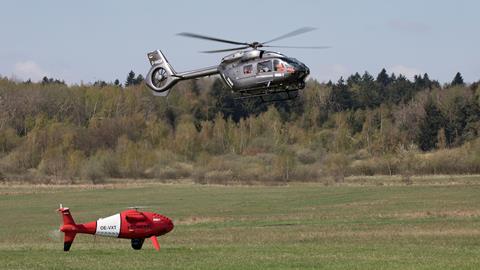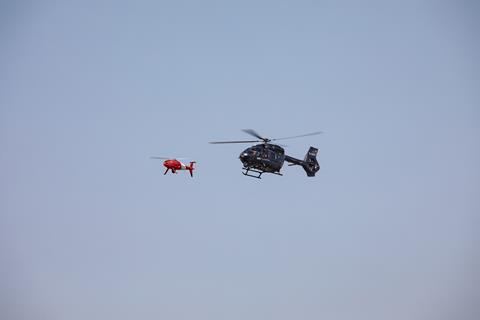The EU is providing up to €22 million ($23.8 million) in funding for the development of technologies to support next-generation combat helicopters, including interoperability with unmanned air vehicles (UAVs) – so-called Manned Unmanned Teaming (MUM-T).
Part of the bloc’s European Defence Industrial Development Programme, a new tender calls for submissions which create “an advanced collaborative system for increased mission efficiency of manned platforms combined with unmanned platforms” via a new generic interface.

“The system will allow the manned and unmanned platforms to be able of performing operational missions, which include the helicopter and the UAV, in demanding scenarios,” it says.
Activities covered by the tender include initial design and feasibility studies, the development of a concept of operations, prototyping and ultimately flight testing the technology.
Any technologies developed will have to be integrated onto an existing UAV and manned helicopter for the demonstration phase, although they should be platform-agnostic to allow widespread uptake across fleets of legacy rotorcraft.
Additionally, the tender envisages significantly enhanced levels of interoperability (LOI) between the two platforms.
But while NATO standards already cover a broad swathe of interactions between the two aircraft – ranging from indirect receipt of data from the UAV (LOI 1) all the way up to controlling its launch and recovery (LOI 5) – the EU wants to see two new levels added: fully autonomous; and semi-autonomous flight.
To support an aim of reducing overall crew workload through increased automation, the activity also encompasses the development of “advanced flight-control actuation with new actuators and integration into an existing flight-control system”.
Crucially, the tender requires the MUM-T technology to be “based on a civil-certifiable solution adapted to military environments/requirements”.

Both of the EU’s big two helicopter manufacturers have already been exploring the potential of MUM-T.
Airbus Helicopters in 2019 conducted an initial evaluation allowing the crew of an H145 light-twin to control a Schiebel Camcopter UAV while in flight.
A second phase of testing was due to start later this year aimed at improving certain areas, including crew workload and connectivity, as well as enhancing the levels of autonomy employed.
Leonardo Helicopters, meanwhile, was this year intending to carry out a series of MUM-T flight trials in the UK using an AW159 Wildcat.
To be carried out in conjunction with the UK’s Defence Science and Technology Laboratory, the tests will build on simulator work in 2019 which confirmed the feasibility of the effort.
Despite Brexit, the document makes clear that at present UK companies will be able to participate in the EU tender.
The deadline for submissions is 1 December 2020.





























